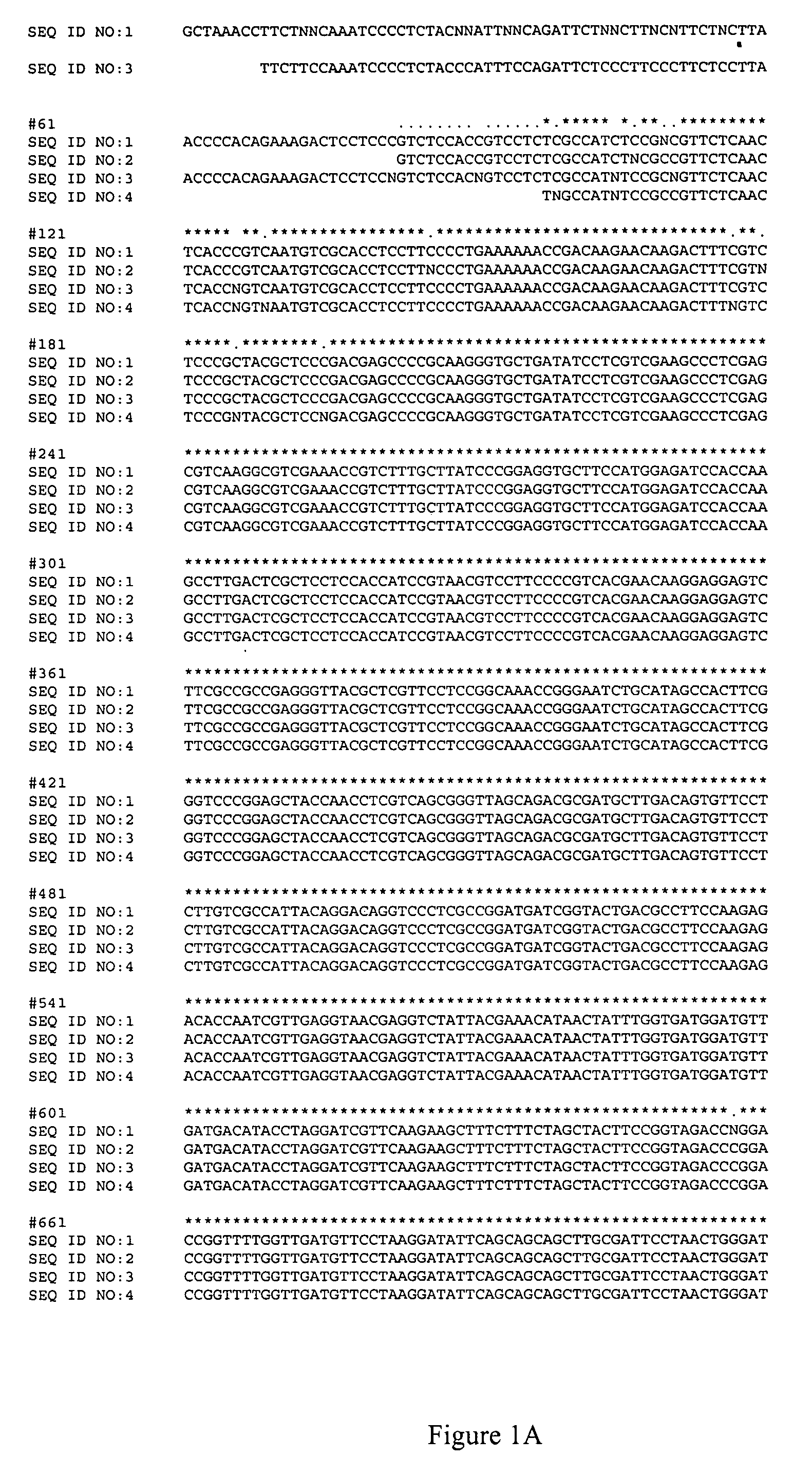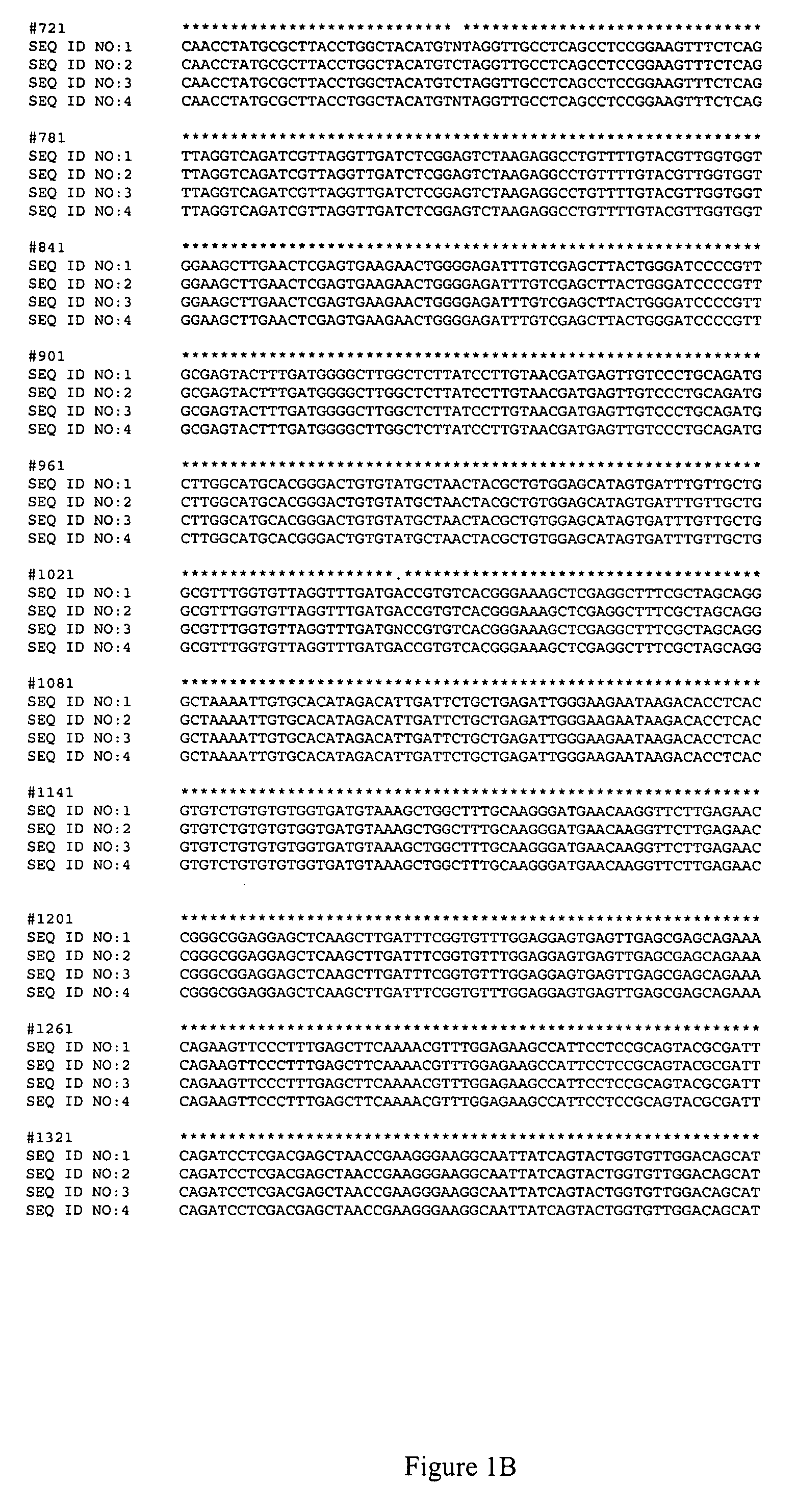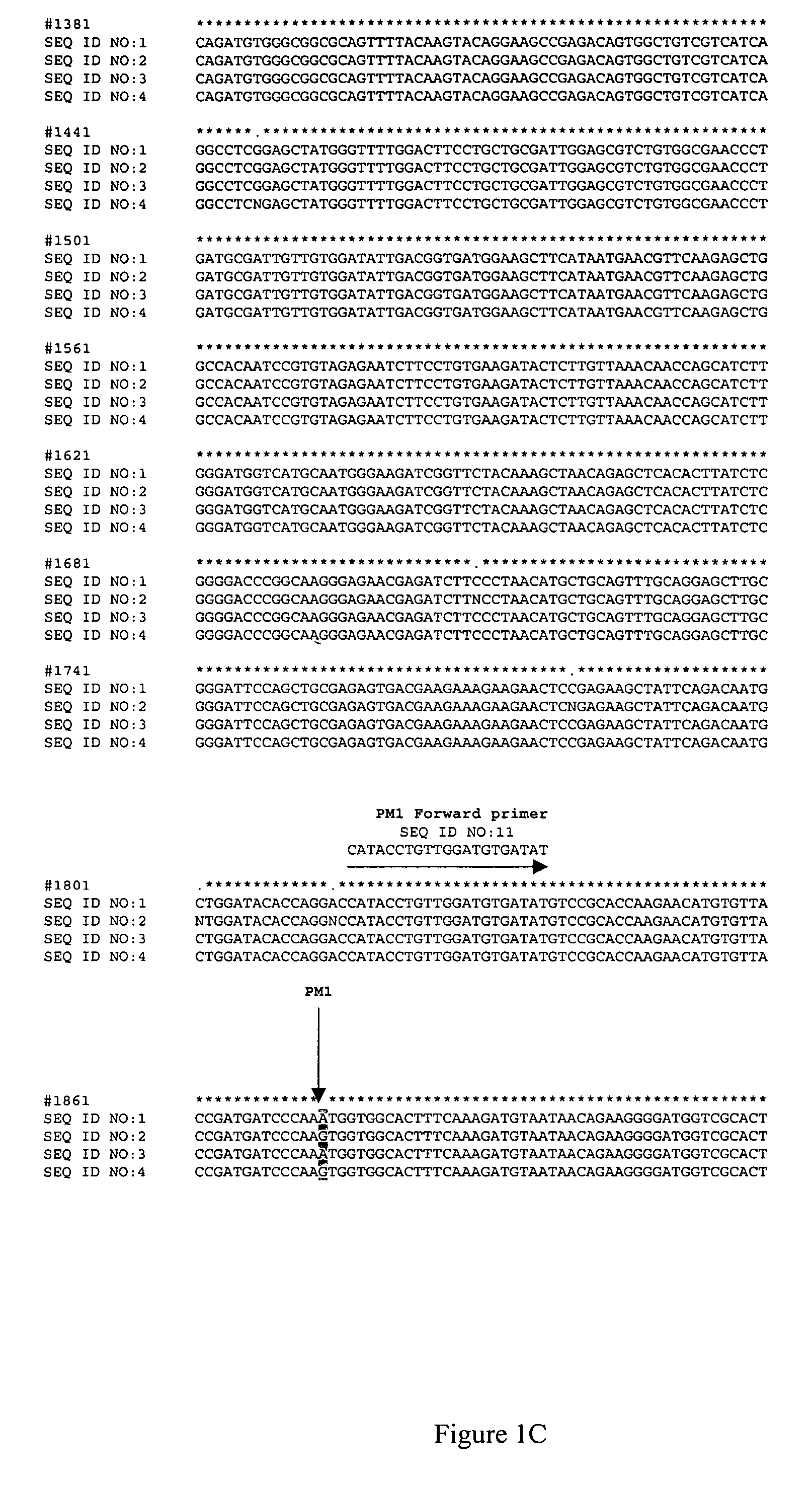Assay for imidazolinone resistance mutations in Brassica species
a technology of imidazolinone resistance and brassica, which is applied in the field of imidazolinone resistance mutations in brassica species, to achieve the effect of reliable and quick detection and increased toleran
- Summary
- Abstract
- Description
- Claims
- Application Information
AI Technical Summary
Benefits of technology
Problems solved by technology
Method used
Image
Examples
example 1
Materials and Genomic DNA Isolation
[0050]The canola lines used for these experiments are listed in Table 1 below. The nucleic acid sequences of the AHAS1 genes from each of these lines are shown in FIG. 1, and the nucleic acid sequences of the AHAS3 genes for each of these lines are shown in FIG. 2.
[0051]
TABLE 1HerbicideLinesMutationsCoderesistanceT9107Point mutation 1 on AHAS1PM1Partial resistantT9108Point mutation 2 on AHAS3PM2Partial resistantTR101Point mutation 1 + 2RResistantOPTION 501wild typeSSusceptible
[0052]Plants were grown from seeds of each canola line. Three to five leaf punches from each plant were combined in each sample, and samples were freeze dried. The freeze dried samples were ground by adding cleaned BB's (BB's were washed with soap and water and then dried with organic solvent prior to use) to each sample and shaking the samples until a fine powder was obtained (approximately one minute). Five hundred μl of Extraction Buffer (1300 μl 1M Tris; 4.15 ml dd H2O; 32...
example 2
PM1 Assay
[0054]A single strand conformational polymorphism (SSCP) analysis was carried out by denaturing products of two rounds of PCR which selectively amplified the region of the Brassica AHAS1 gene that corresponds to the PM1 mutation, that is, the region surrounding position 1874 of SEQ ID NOs:1-4, and allowing each of the single strands to reanneal partially with itself. The conformation of each of the single strands, along with its nucleotide sequence, determines its mobility in a non-denaturing gel.
A. AHAS1-Specific Amplification Step
[0055]The conditions used for the first round of PCR amplification are listed in Table 2. The AHAS1-specific forward primer used for the first amplification step had the sequence 5′ CACAAGTCTCGTGTTATAAAAC 3′ (SEQ ID NO:9) and the AHAS1-specific reverse primer used had the sequence 5′ CATTGAGTGCCAAACATATGAA 3′ (SEQ ID NO:10). A Tetrad thermocycler (MJ Research) was used for PCR amplification. The first round PCR reactions consisted of an initial d...
example 3
PM2 Assay
[0060]This assay employed a first round of PCR which selectively amplifies the AHAS3 gene, after which the amplification product was divided into two aliquots. Each aliquot was then amplified separately, using sets of three primers nested within those used for amplifying the AHAS3 gene. The three primers selectively amplify the region of the AHAS3 gene corresponding to the PM2 mutation, that is, the region surrounding position 1712 of SEQ ID NOs; 5-8. Separate PCR steps were performed on each aliquot, one which selectively amplifies nucleic acids containing the PM2 mutation and one which selectively amplifies wild type nucleic acids. The presence of wild type or PM2 was detected by gel electrophoresis.
A. AHAS3-Specific Amplification Step
[0061]The conditions used for the first round of amplification are shown in Table 4. The AHAS3-specific forward primer used for the first amplification step had the sequence 5° CACAAGCCTCGTGTTATAAAAA 3′ (SEQ ID NO:13), and the AHAS3-specific...
PUM
| Property | Measurement | Unit |
|---|---|---|
| temperatures | aaaaa | aaaaa |
| volume | aaaaa | aaaaa |
| fluorescent | aaaaa | aaaaa |
Abstract
Description
Claims
Application Information
 Login to View More
Login to View More - R&D
- Intellectual Property
- Life Sciences
- Materials
- Tech Scout
- Unparalleled Data Quality
- Higher Quality Content
- 60% Fewer Hallucinations
Browse by: Latest US Patents, China's latest patents, Technical Efficacy Thesaurus, Application Domain, Technology Topic, Popular Technical Reports.
© 2025 PatSnap. All rights reserved.Legal|Privacy policy|Modern Slavery Act Transparency Statement|Sitemap|About US| Contact US: help@patsnap.com



